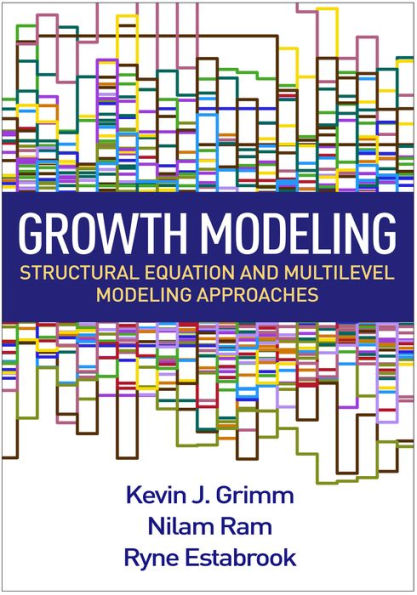Growth Modeling: Structural Equation and Multilevel Modeling Approaches
Growth models are among the core methods for analyzing how and when people change. Discussing both structural equation and multilevel modeling approaches, this book leads readers step by step through applying each model to longitudinal data to answer particular research questions. It demonstrates cutting-edge ways to describe linear and nonlinear change patterns, examine within-person and between-person differences in change, study change in latent variables, identify leading and lagging indicators of change, evaluate co-occurring patterns of change across multiple variables, and more. User-friendly features include real data examples, code (for Mplus or NLMIXED in SAS, and OpenMx or nlme in R), discussion of the output, and interpretation of each model's results.
User-Friendly Features
*Real, worked-through longitudinal data examples serving as illustrations in each chapter.
*Script boxes that provide code for fitting the models to example data and facilitate application to the reader's own data.
*"Important Considerations" sections offering caveats, warnings, and recommendations for the use of specific models.
*Companion website supplying datasets and syntax for the book's examples, along with additional code in SAS/R for linear mixed-effects modeling.
Winner--Barbara Byrne Book Award from the Society of Multivariate Experimental Psychology
"1122811670"
User-Friendly Features
*Real, worked-through longitudinal data examples serving as illustrations in each chapter.
*Script boxes that provide code for fitting the models to example data and facilitate application to the reader's own data.
*"Important Considerations" sections offering caveats, warnings, and recommendations for the use of specific models.
*Companion website supplying datasets and syntax for the book's examples, along with additional code in SAS/R for linear mixed-effects modeling.
Winner--Barbara Byrne Book Award from the Society of Multivariate Experimental Psychology
Growth Modeling: Structural Equation and Multilevel Modeling Approaches
Growth models are among the core methods for analyzing how and when people change. Discussing both structural equation and multilevel modeling approaches, this book leads readers step by step through applying each model to longitudinal data to answer particular research questions. It demonstrates cutting-edge ways to describe linear and nonlinear change patterns, examine within-person and between-person differences in change, study change in latent variables, identify leading and lagging indicators of change, evaluate co-occurring patterns of change across multiple variables, and more. User-friendly features include real data examples, code (for Mplus or NLMIXED in SAS, and OpenMx or nlme in R), discussion of the output, and interpretation of each model's results.
User-Friendly Features
*Real, worked-through longitudinal data examples serving as illustrations in each chapter.
*Script boxes that provide code for fitting the models to example data and facilitate application to the reader's own data.
*"Important Considerations" sections offering caveats, warnings, and recommendations for the use of specific models.
*Companion website supplying datasets and syntax for the book's examples, along with additional code in SAS/R for linear mixed-effects modeling.
Winner--Barbara Byrne Book Award from the Society of Multivariate Experimental Psychology
User-Friendly Features
*Real, worked-through longitudinal data examples serving as illustrations in each chapter.
*Script boxes that provide code for fitting the models to example data and facilitate application to the reader's own data.
*"Important Considerations" sections offering caveats, warnings, and recommendations for the use of specific models.
*Companion website supplying datasets and syntax for the book's examples, along with additional code in SAS/R for linear mixed-effects modeling.
Winner--Barbara Byrne Book Award from the Society of Multivariate Experimental Psychology
63.99
In Stock
5
1

Growth Modeling: Structural Equation and Multilevel Modeling Approaches
537
Growth Modeling: Structural Equation and Multilevel Modeling Approaches
537
63.99
In Stock

Product Details
| ISBN-13: | 9781462526079 |
|---|---|
| Publisher: | Guilford Publications, Inc. |
| Publication date: | 09/30/2016 |
| Series: | Methodology in the Social Sciences Series |
| Sold by: | Barnes & Noble |
| Format: | eBook |
| Pages: | 537 |
| File size: | 34 MB |
| Note: | This product may take a few minutes to download. |
About the Author
From the B&N Reads Blog
